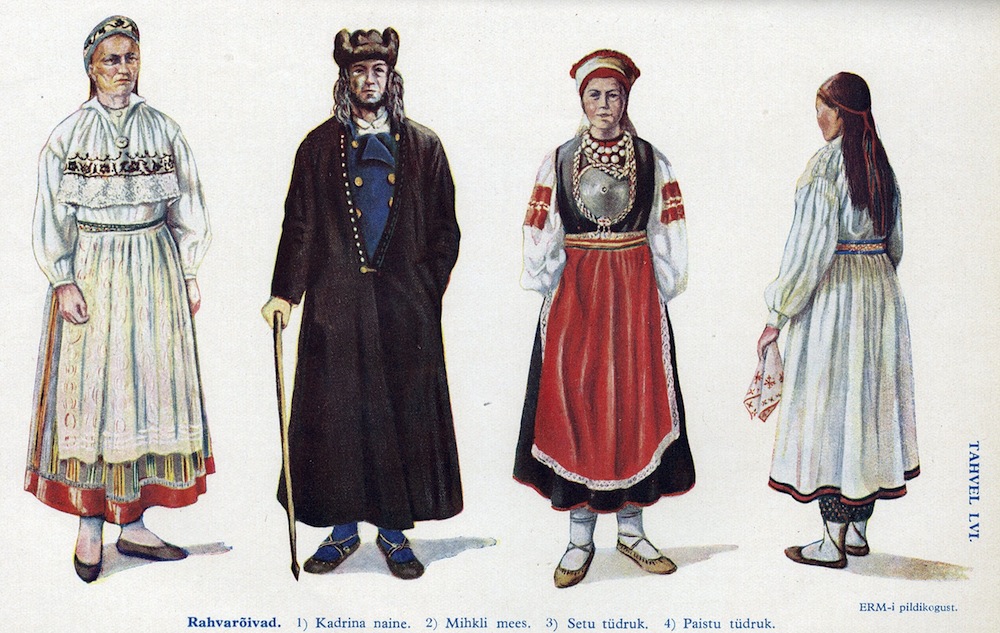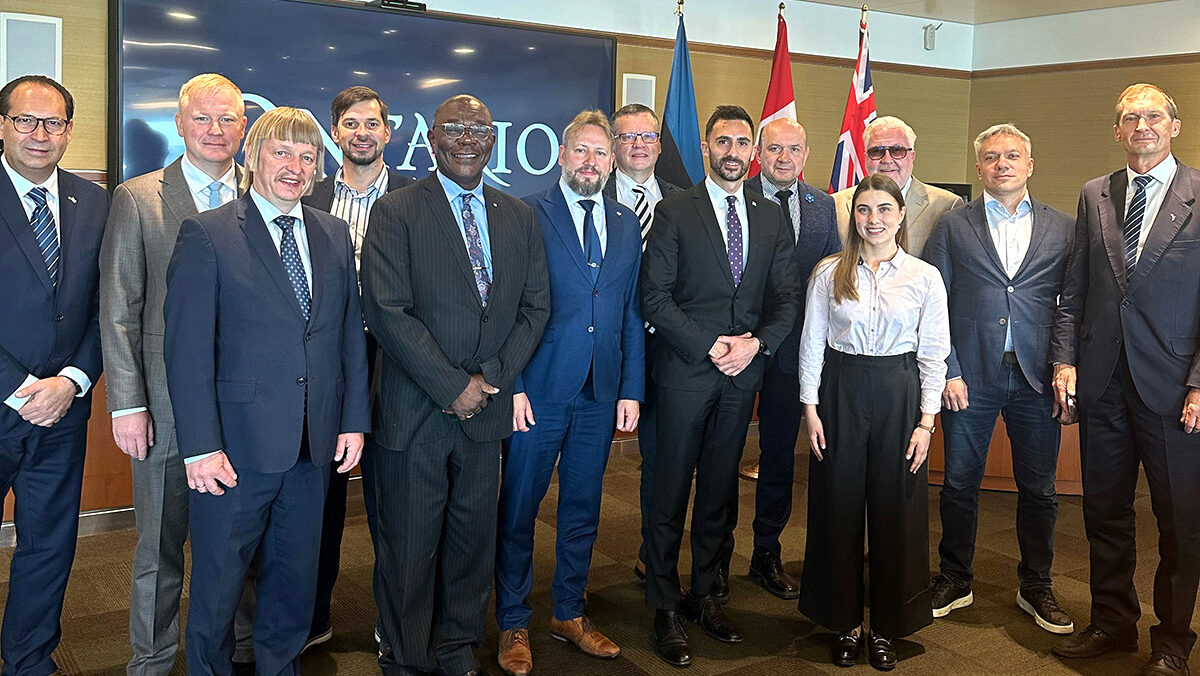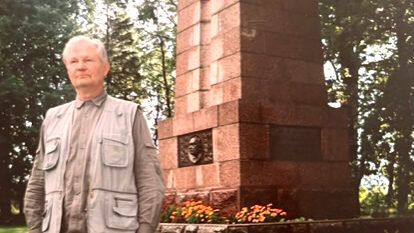It is a consistent worldview, tradition and way of life, which in this form exists only here, in Estonia.
Just as maarahvas and maakeel (native language) (2) vary in different regions, so does the religion. We meet somewhat different customs in different regions. For example, in the southern region the powers of nature are called ema; isa (mother, father) but in the northern regions haldjas (guardian spirit). In the southern and western regions the arrival of spring is celebrated some weeks before than in the northern regions. But just as different indigenous nations (and dialects) make up one nation (and language), different varieties of religion make up one religion. The variability of the native religion arises from different landscapes, weather, languages and cultural contacts. Our native religion forms one family with the nature worships of the other Uralic peoples.
The tradition of the native religion can fragmentarily be traced in the Estonian culture. In our customs, beliefs, attitudes but most of all our language there are many elements similar to those of our ancestors. Just this part of the tradition that has reached our time, often indescribable, that we gain from home by personal experience, is the most important.
Also important is the tradition written down and gathered into the collections of different museums during the last 150 years. In Estonia we have one of the world's largest folklore collections. During nationwide campaigns, started in the 19.century, millions of pages of the folk tradition reflecting the world view of the native religion have been gathered.
Everything in the tradition is not acceptable for us. Quite a big part of it has been borrowed from different cultures at different times and is in the opposition with the native religion. Thus the studying of the tradition based on the native religion is like gold washing – only the important and valuable part must remain.
As the stories of our people and our kindred peoples tell us, at first their was a water bird. From its eggs the world and nature were born. Nature signifies something that was not born but is alive and in development. It grew as a tree grows until everything was filled with all kind of beings. Everything that dwells, has a soul – the stars, the Moon, the Sun, water, fire, earth.
Man is only one animated being among many others. Human beings together with stones, plants and animals have a common mother – the Earth. Maarahvas has for thousands of years arisen from the Earth and the remains of the people have made the Earth fertile. We are in a thousand ways connected to the Earth and nature. All that is done to us, is done to the Earth and all, that is done to the Earth, is done to us.
The indigenous chronology reflects the changes in the nature during the year cycle. For us the movement of time is not lineal but circular. Just as the dark winter is followed by the warm summer, new life is eternally born from death. Our festivals are the focal points in the eternal movement of nature.
Birth, wedding and burial are the focal points in man's life cycle. Indigenous customs and magic rituals made on those occasions help to lead an enjoyable life – in harmony with other people, the dead and the powers of nature. According to the native belief, man's life doesn't end with his death but goes on in the other world, at the other side of the Toonela River. The dead relatives come back to visit us on certain festivals. In our thoughts we are always together with them, we can ask for an advice or tell them about our grief. The living and the dead are together, we are strong together.
The shrine is the sanctuary of maarahvas. It is the sacred place of tens and tens of generations where people go on more important festivals or other important occasions. We can talk to the powers of nature there, experience peace and gain power.
Shrine is a limited area together with ancient trees, stones, bodies of water, plants, swing, fireplace, sauna of the shrine and log-store of the shrine. Before going to the shrine body and mind are purified; in the shrine it's not allowed to have bad thoughts, to swear, to break twigs or to gather plants. It's not allowed to be drunk or do any kind of cruel deeds. There are many folk stories about people who have broken these laws and were punished, sometimes even killed by the powers of the shrine.
The trees of the shrine, as all trees, are alive. People go to the trees to ask for an advice or to tell about their grief. There are stories about the shrine trees and sacred lakes that have left their places because they were not shown enough respect. In the winter of 10215 (2002) a lake dried up in northern Estonia after deepening. Many local inhabitants are sure that the lake left because it was disturbed.
Among the attitudes of maarahvas one of the central terms is mõnu (harmony, enjoyment). Mõnu is the cumulative effect of the conditions and facts, which enables to carry out whatever action in the most enjoyable and harmonious way. If you want your life to be mõnus (enjoyable), you must be in harmonious relations with other people, ancestors and the powers of nature. Healthy food, harmonious environment and other natural things belong to this kind of life-style. Also the possibility to go to sauna on Saturday evening.
Harmonious relations are positive and durable. Relations must not be drained out or misused. Some relations must stay superficial, others must grow deeper. The capability of estimating relations grows with maturing. Harmonious relations are inexhaustible and enable a people to live in one place for thousands of years, in harmony with ancestors, other peoples and nature.
The being of a people must also be mõnus. The state of a people also depends on relations – relations inside the people itself, relations with other peoples, relations with nature. The sense of reality of a people or culture – the capability of estimating and developing relations – matures with generations. Thus in the state of an old culture, an old people there is more mõnu, its relations with the environment are more mature, more balanced. A member of a mature people knows who he is, where he belongs and what he should do. Thus his life is mõnus.
Christianity was brought into Estonia “with fire and sword” during the war in the 13th century. This war of independence that lasted more than 20 years, was for the indigenous people war for their religion. An old chronicle tells us about the Estonian people who swore that “until there is a year-old or knee-high little boy alive in this country, we will not accept Christianity”. Though maarahvas had finally to surrender to the prevailing German, Danish and Swedish armies, Christianity was still not accepted. In spite of the heavy fines, beating and even capital punishment established by the occupants, people buried their dead up to the 19th century in the village cemeteries near their homes. Until the 19th century shrines, sacred stones, sources and trees were found all over Estonia where people went to make sacrifices, to ask for help and get cured. Even nowadays more than 500 shrines and several thousands of other sacred places are known. Some adherents of the native religion were burnt alive by the Protestant inquisition as late as the middle of 17th century.
Nowadays several Christian confessions try to convert Estonians into Christianity with the financial support from abroad. Though the Christian mission actually means fighting against the indigenous culture and religion, it is not legally banned yet. The adherents of the native religion consider the Christian mission unethical and aggressive towards the indigenous people and condemn this activity. We found Christianity, which arose from the tradition of desert peoples useless and even hostile for the land of woods, sea and marshes. The history has shown us that Christianity cannot exist side by side with living nature and other cultures and religions. If we want to survive and keep our land for the generations to come, we must protect the religion and culture of our ancestors. Nevertheless we acknowledge the historical values of Christian monuments (mediaeval churches, objects of art etc.) and reasonable study and protection thatof.
As the Estonian native religion is only the religion of the indigenous people of Estonia, the mission of this religion is in no way possible. The adherents of that religion think that every people must follow their own historical, pre-Christian religion. Ancient religions reflect wisdom and experience, which enables us to live in harmony with nature and ourselves. And this is what we all need.
Ahto Kaasik, Maavalla koda, October 2012
(1) maarahvas – self-designation of Estonians predominant till the mid-XIX century; literally people of Earth, people of the Land
(2) literally: tongue of the Earth, tongue of the Land




